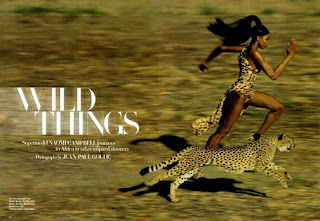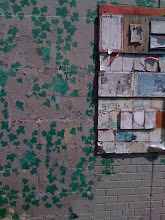Steven Klein’s shots of Dutch supermodel Lara Stone painted in blackface ruffled more than a few fashionable feathers. Stone is pictured in turban-style headdresses and imperial-inspired coats as well, which raised eyebrows and outrage among readers who believed these wardrobe decisions have colonialist connotations.
The spread was featured in an issue devoted to “supermodels,” which was devoid of any actual models of color. One has to wonder: Was the shoot just a product of a misguided artistic vision, or something even uglier?
Was it a symptom of the fantasy-driven world of fashion that is blissfully, excruciatingly indifferent to “real world” problems? Even in the midst of a nation-wide recession, many magazines continue to hawk shoes and bags that cost more than my monthly rent. Fashion is always seeking edgier territory and isn’t really known for its sensitivity to class issues. So was this shoot just another instance of editors feverishly trying to keep their magazine interesting, disregarding the sentiments of their readers in the process? Perhaps, however implausibly, the team responsible for the photos was unaware of their racially charged implications. It’s just as possible, though, that the motivation behind the photos is much more troubling.
Maybe the shoot was a perverse way for the editors to use models “of color” without legitimizing non-white forms of beauty. In a recent interview on CNN, former model and current fashion blogger Jenna Sauers spoke eloquently about the pervasive racism in the modeling industry. She talked about attending castings where signs blatantly declared “no black girls today,” and talked about hearing casting directors criticize girls who looked too “ethnic.” Maybe the shoot exemplifies the fashion industry’s discomfort with actual non-white bodies.
If they wanted to play with the idea of painting skin without weighty racial issues, the editors could have experimented with texture. Another photo from the issue features Stone painted to look like marble. The photo plays on artistic conceptions of feminine beauty and the Pygmalion myth of the sculptor whose beloved ivory creation comes to life. This photo was edgy and evoked relevant societal issues without entering offensive racial territory.
The spread is one of a number of recent fashion faux pas. This past September, Harper’s Bazaar referenced the trope of the wild, animalistic black woman when they dressed Naomi Campbell in heavy furs and photographed her jumping rope with monkeys. The colonial safari-themed spread, shot by photographer Jean-Paul Goude, resurrected stereotypical, primitive constructions of black femininity.
The same issue of Harper’s Bazaar also featured a 14-page Harlem Renaissance-inspired pictorial of models Chanel Iman and Arlenis Sosa. The shoot, photographed by Peter Lindbergh, was aesthetically beautiful: The soft, ethereal quality of the images contrasted beautifully with the highly textured tweeds and wools. Yet, while the pictures were lovely, the combined message of the two spreads was pretty ugly—instead of focusing on the contemporary experiences of African-American women, the magazine mined stereotypes and played-out historical tropes. But in an era where there’s a dearth of black models, the question is, are stereotypical portrayals really preferable to no portrayals at all?
All of these mishaps are evidence that, despite the age of Obama, we truly don’t live in a post-racial society. Fashion editors and photographers need to realize that their images, however aesthetically pleasing, don’t exist in a vacuum devoid of cultural and historical meanings. Racism should not be the hot accessory for this fall.
(Photo credits: French Vouge, Harper's Bazaar)



No comments:
Post a Comment